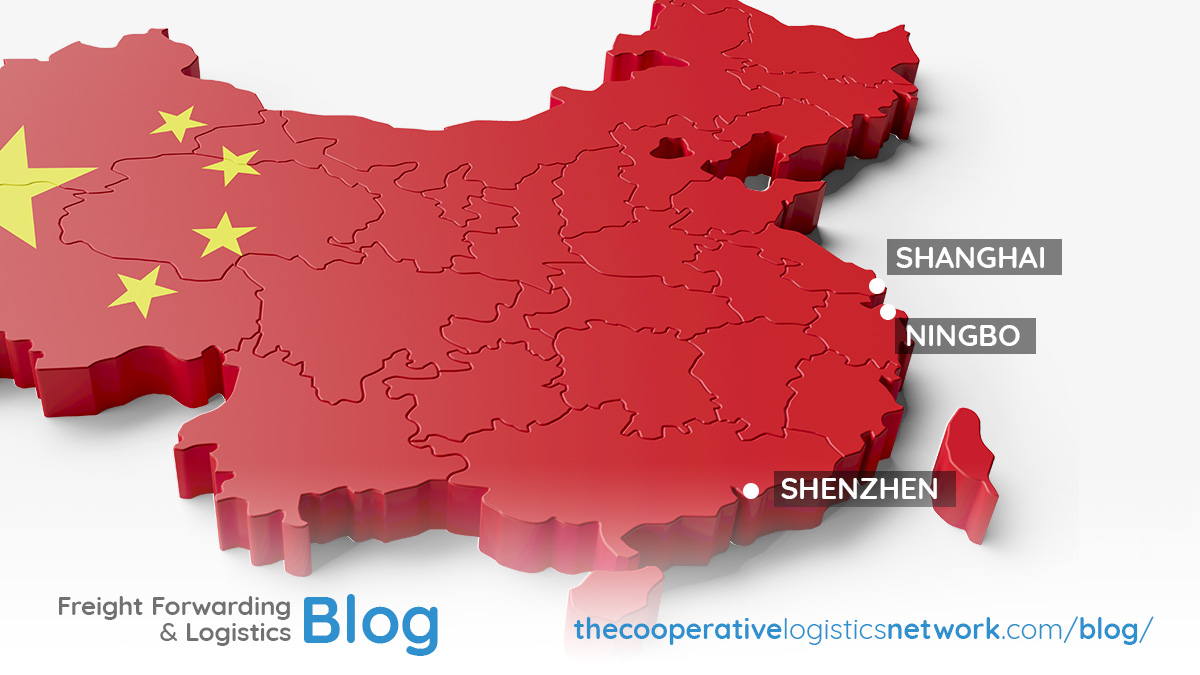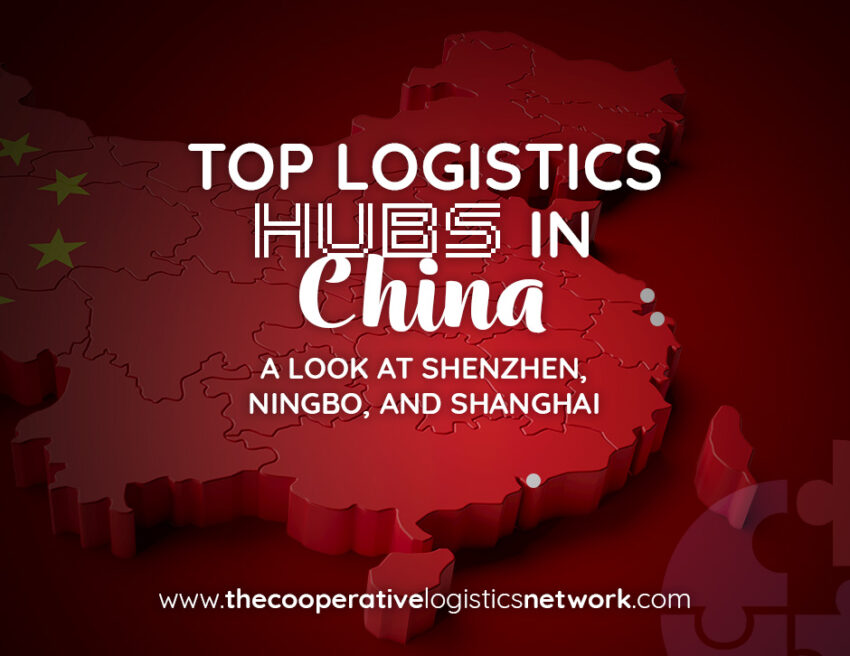China’s rise as the world’s manufacturing powerhouse is intricately linked to its logistics capabilities. The country doesn’t just produce—it moves goods with astonishing speed and scale. And at the heart of this global logistics machine are a few standout cities that have become essential cogs in international trade. Today, we dive into the top logistics hubs in China: Shenzhen, Ningbo, and Shanghai—three dynamic port cities that drive the movement of cargo not just across Asia, but across the globe.
For freight forwarders, logistics professionals, and global shippers, understanding these hubs isn’t just helpful—it’s essential. These cities are more than just names on a shipping label. They are economic ecosystems with specialized infrastructure, customs efficiency, technological innovation, and global connectivity that shape the future of logistics.
Why logistics hubs in China matter
When people talk about global trade, much of it begins or ends in China. The country exported over USD 3.58 trillion worth of goods in 2024, making it the world’s largest exporter. Facilitating this massive volume are robust logistics infrastructures concentrated in a few strategic cities.
Logistics hubs in China play a vital role in making the supply chain seamless for international businesses. These hubs serve as both production clusters and distribution centers, allowing goods to move efficiently from the factory floor to shipping lane. Each hub has its strengths—some are innovation centers, others thrive on sheer cargo volume, while some offer superior access to global markets through multimodal connectivity. Let’s take a closer look at three of China’s most important logistics hubs: Shenzhen, Ningbo, and Shanghai.
Shenzhen: Innovation meets efficiency
Located in southern China, Shenzhen has evolved from a fishing village into one of the world’s busiest container ports and a global tech hub. As part of the Greater Bay Area, Shenzhen benefits from close proximity to Hong Kong and Guangzhou, making it an ideal gateway to Southeast Asia and beyond.
Shenzhen is home to the Yantian International Container Terminal, which is operated by Hutchison Port Holdings and ranks among the largest container terminals globally. Yantian handles a high volume of exports, especially electronics and high-value goods, thanks to its proximity to factories in Guangdong province.
What truly sets Shenzhen apart from other logistics hubs in China is its integration of technology. The city has embraced smart logistics solutions with AI-driven warehousing, automated cargo handling, and blockchain-based customs systems. It’s no surprise that tech giants like Huawei and DJI, along with thousands of e-commerce suppliers, use Shenzhen as their primary logistics base.
For freight forwarders, Shenzhen offers not only efficient port operations but also a robust supply chain ecosystem. From cross-border trucking into Southeast Asia to express air freight services via Shenzhen Bao’an International Airport, it’s a hub that’s as fast as it is flexible.

Ningbo: Quietly powerful and globally connected
Unlike Shanghai or Shenzhen, Ningbo often operates under the radar—but don’t let that fool you. The Port of Ningbo-Zhoushan is one of the busiest ports in the world by cargo tonnage. Located in Zhejiang province on China’s eastern seaboard, Ningbo specializes in bulk cargo, manufacturing exports, and feeder services.
The port’s strength lies in its massive handling capacity and deep-water access. It serves as a major outlet for China’s booming industrial heartland, particularly textile, machinery, and plastic product manufacturers. In fact, Ningbo has direct shipping routes to over 600 ports in 100+ countries, making it a crucial component of China’s Belt and Road Initiative.
In recent years, the city has invested heavily in digital port services and multimodal transport. Ningbo’s railway connections extend cargo reach into inland provinces like Anhui and Henan, making it an increasingly vital node in cross-border trade.
Ningbo’s customs clearance processes have also been praised for efficiency. The Single Window System allows importers and exporters to submit documentation digitally, reducing time and cost. For logistics companies looking for an alternative to the more congested Shanghai port, Ningbo offers speed, space, and smart service.
Shanghai: The giant of global logistics
It would be impossible to talk about logistics hubs in China without focusing on Shanghai, the undisputed titan of trade. Home to the Shanghai Yangshan Deep Water Port, the city has held the title of the world’s busiest container port for several years in a row.
Shanghai’s strategic location at the mouth of the Yangtze River gives it unrivaled access to both international sea routes and inland river transportation. The port handles more than 47 million TEUs annually, serving as a linchpin for China’s eastern and central provinces.
But it’s not just the numbers that make Shanghai impressive—it’s the sophistication. The port has embraced cutting-edge automation, including remote-controlled gantry cranes, unmanned vehicles, and AI-assisted logistics platforms. These innovations make Shanghai not only the busiest but also one of the most technologically advanced logistics hubs in China.
In addition to sea freight, Shanghai boasts two major international airports and extensive rail links to Central Asia and Europe via the China-Europe Railway Express. This multimodal capacity allows forwarders to build flexible, resilient shipping plans that can adapt to shifting trade dynamics.
Shanghai is also a major financial center, which means companies operating there benefit from better access to trade finance, insurance services, and customs consulting. For international freight forwarders, Shanghai is often the entry point into China—and for many, the heart of their Asia-Pacific logistics strategy.
What this means for freight forwarders in China
Understanding the strengths of logistics hubs in China is crucial for freight forwarders in China who want to optimize routing, reduce transit times, and build strategic partnerships. Each city offers distinct advantages:
-
Shenzhen is ideal for high-tech exports, e-commerce fulfillment, and fast regional distribution.
-
Ningbo provides a reliable and less congested alternative with strong links to manufacturing centers.
-
Shanghai delivers unmatched volume, advanced infrastructure, and deep global connectivity.
For global freight forwarders looking to establish a presence in China—or strengthen their existing operations—these hubs are more than just ports. They’re dynamic ecosystems that offer access to talent, tech, infrastructure, and policy support. Choosing the right hub (or combination of hubs) can significantly impact delivery performance, client satisfaction, and bottom-line results.
Wrapping up: Logistics hubs in China powering the world
As global supply chains become increasingly complex and competitive, choosing the right logistics partners and locations becomes a strategic decision. The continued evolution of logistics hubs in China like Shenzhen, Ningbo, and Shanghai demonstrates the country’s commitment to staying at the forefront of global trade.
Each city brings a unique set of advantages to the table. But collectively, they showcase what China does best—scale, speed, and innovation. For freight forwarders, understanding the value and potential of these hubs isn’t just useful—it’s a competitive advantage in a market that rewards precision and performance.
Whether you’re shipping electronics to Europe, machinery to Africa, or fashion to the U.S., chances are your cargo will pass through one of these key logistics powerhouses. Make sure you know them well—because the future of freight forwarding runs through them.


